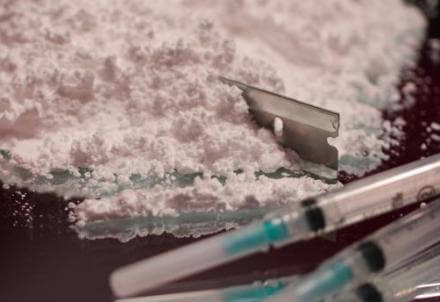For more than 30 years researchers have committed to developing a vaccine for cocaine addiction and a new study shows significant progress, but also important next steps in the development of a vaccine.
In a study of 300 patients at six sites across the United States, researchers found that more than 60 percent of those who received a cocaine vaccine reached antibody levels at a therapeutic range, had increased treatment retention and more patients attaining at least two weeks of abstinence, but the overall amount of cocaine use did not decrease compared to those who had lower antibody levels and those who received a placebo. The findings of the study, led by researchers at Baylor College of Medicine, were published today in the journal Drug and Alcohol Dependence.
“In our previous study in 2008, about one-third of those who received the cocaine vaccine had antibody levels that were sufficiently high enough to block the euphoric effects of cocaine. In this study, more than 60 percent of patients had antibody levels in the therapeutic range, so this finding is promising,” said Dr. Thomas Kosten, professor and the Jay H. Waggoner Endowed Chair in the Menninger Department of Psychiatry and Behavioral Sciences at Baylor. Kosten is also with the Michael E. DeBakey Veterans Affairs Medical Center in Houston. He also noted the increased treatment retention and three times higher rate of cocaine abstinence among those with therapeutic antibody levels, although the number of patients with sustained abstinence was relatively low.
Researchers recruited 300 patients across six study sites nationally. The group was randomized, and 152 received the active vaccine and 148 received the placebo. Both groups had equivalent baseline cocaine use, having smoked cocaine for an average of 13 days per month before treatment. Notably, during the initial eight weeks before the antibody reached therapeutic levels, those ultimately attaining therapeutic antibody levels had more cocaine use than those on placebo or those who did not reach therapeutic antibody levels with the vaccine. To be a part of the study, participants must have had two urine samples positive for cocaine two weeks prior to the study, indicating that they were regular users.
Participants received the vaccinations during weeks one, three, five, nine and 13 with at least 10 days between vaccinations. They then visited the study site three times per week to give urine samples and self-report on cocaine use. They had a follow-up visit at week 25.
Of the 152 who received the active vaccine, 67 percent had antibody levels in the therapeutic range. The group who received the vaccine stayed in treatment longer than the placebo group, and three times more of them were able to attain at least two weeks of abstinence from cocaine use during the study. This difference in abstinence rates, however, was not statistically significant due to the relatively small number of patients who had sustained abstinence (about 10 percent).
“We were pleased to see such an improvement of response in the immune system, but disappointed that we were not able to replicate the percentage of cocaine use going down in the high antibody group compared to placebo and low antibody group as in the 2008 trial. This failure to show a difference was due to an early treatment difference during weeks one to eight between the high and low antibody level groups, when cocaine use would not be blocked by the vaccination, because the antibody levels would not yet have reached their therapeutic levels (weeks one to eight) in the high antibody level group. During those weeks, some of the patients with rising antibody levels, per self-report, may have been increasing their use of cocaine in order to override the partial vaccine blockade,” said Kosten. “We’re going in the right direction and are looking at ways to continue work with this experimental vaccine. In future studies, we hope to have an even better targeted and refined vaccine with more people attaining the higher antibody levels. We also hope to enroll more treatment-seeking and motivated patients, who have attained at least two weeks of abstinence before starting the vaccine.”
Future studies will include inpatient treatment throughout the two-month period of vaccination. Patients who are well-vaccinated and abstinent for a longer period of time, as can be achieved through an inpatient program, have a greater likelihood of success in achieving sustained abstinence. The outpatient phase of the new study will also include weekly outpatient cognitive behavioral therapy as a required component, which was shown to be effective in the first study.
Others who took part in the study include Dr. Coreen B. Domingo, Dr. Daryl Shorter and Dr. Frank Orson of Baylor; Dr. Charles Green of the University of Texas Health Science Center at Houston; Dr. Eugene Somoza and Dr. Rachelle Sekerka from the University of Cincinnati College of Medicine; Dr. Frances R. Levin and Dr. John J. Mariana of Columbia University Medical Center; Dr. Maxine Stitzer and Dr. David Tompkins of Johns Hopkins University School of Medicine; Dr. John Rotrosen, Dr. Vatsal Thakkar and Dr. Benjamin Smoak of New York University School of Medicine and The Department of Veterans Affairs New York Harbor Healthcare System; and Dr. Kyle Kampman of the University of Pennsylvania School of Medicine.
Funding for this study came from the National Institute on Drug Abuse, one of the National Institutes of Health.


